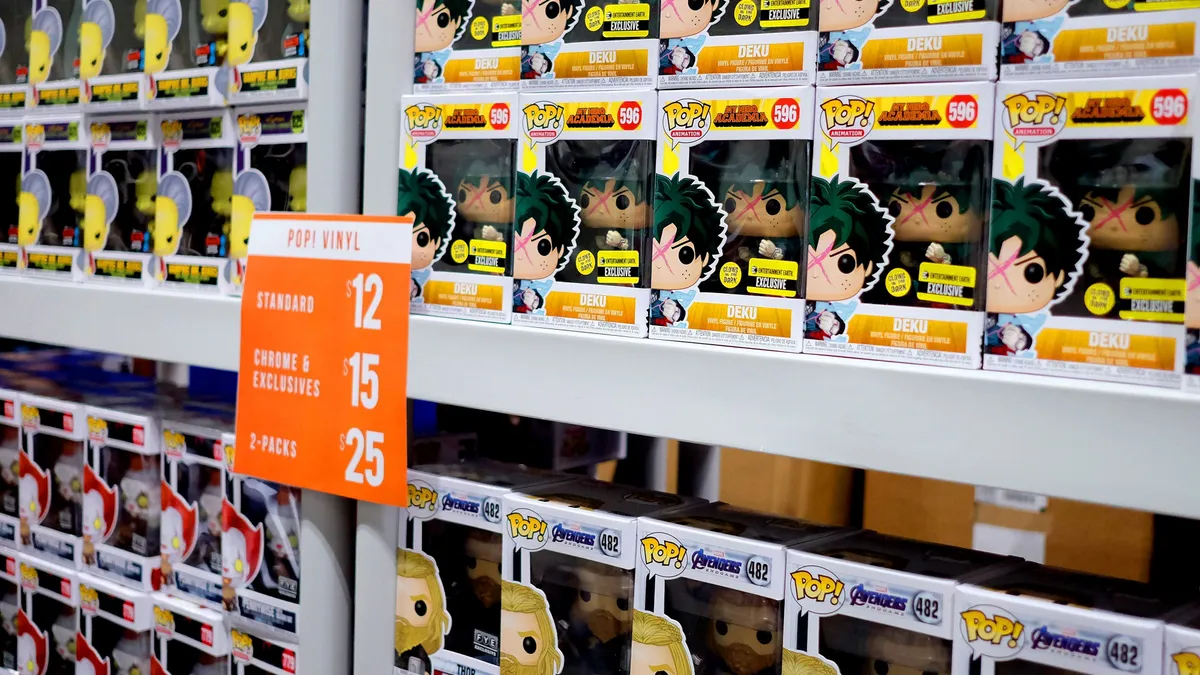Dive Brief:
- Funko is in the process of destroying between $30 million and $36 million worth of inventory after surplus stocks strained its fulfillment network and ratcheted up operating costs.
- The maker of toys and collectibles said that storage and container rental costs for holding the inventory excess knocked more than five and a half percentage points off its gross margin in Q4.
- At $246.4 million, ending inventory for the period was up 48% YoY. That includes the inventory Funko plans to destroy in the first half of 2023, which will result in a write-down on its books.
Dive Insight:
Funko’s inventory surplus not only cost money to stow but also gunked up the bobble head maker’s fulfillment operations.
“Since the pandemic, we’ve added approximately $85 million in annual fulfillment expenses despite similar overall throughput in our distribution center,” CEO Brian Mariotti told analysts earlier this month.
Fixing that is a matter of reducing inventory along with a new warehouse management system that executives expect will dramatically reduce costs.
The sheer amount of stock essentially got in the way as teams worked to fulfill orders. As Steve Nave, Funko’s recently appointed COO and CFO, explained, the company’s fulfillment facility was running at 100% capacity but needs to be at 80% capacity to be as “efficient as we’d like it to be.” Mariotti also noted that volumes at the company’s Arizona-based distribution center were restricting throughput.
In addition, Nave noted that “we were incurring all these kind of storage costs, both in terms of the container rentals as well as some off-site storage that we had to procure in the fall of last year, and then another temporary one that we’ve had to put in place a few weeks ago.”
Funko has already cut its container rental costs in half and still has more inventory to work through, which means “that benefit is going to continue to get bigger and bigger,” Nave said.
The inventory being destroyed is in good condition. Nave, who previously worked as a consultant for Funko, said that the company is targeting its oldest inventory first. To ease operational constraints, the company is also tossing out inventory that it might have been able to sell down the road, as well as inventory that is currently selling well but still represents weeks more supply than needed.
Nave added that the company is using a third-party facility near its distribution center in Buckeye, Arizona, that can provide certificates of destruction to intellectual property licensors.
Inventory destruction can come with sustainability implications and reputational risk attached. Several high profile fashion brands have faced public pushback for destroying unsold product, which is often done to protect margins and brand equity.
The decision to destroy product can be all the more controversial as resale and other circular forms of commerce that preserve used products grow in popularity. Those channels often highlight the environmental costs of disposing of products that consumed natural resources in their production.















